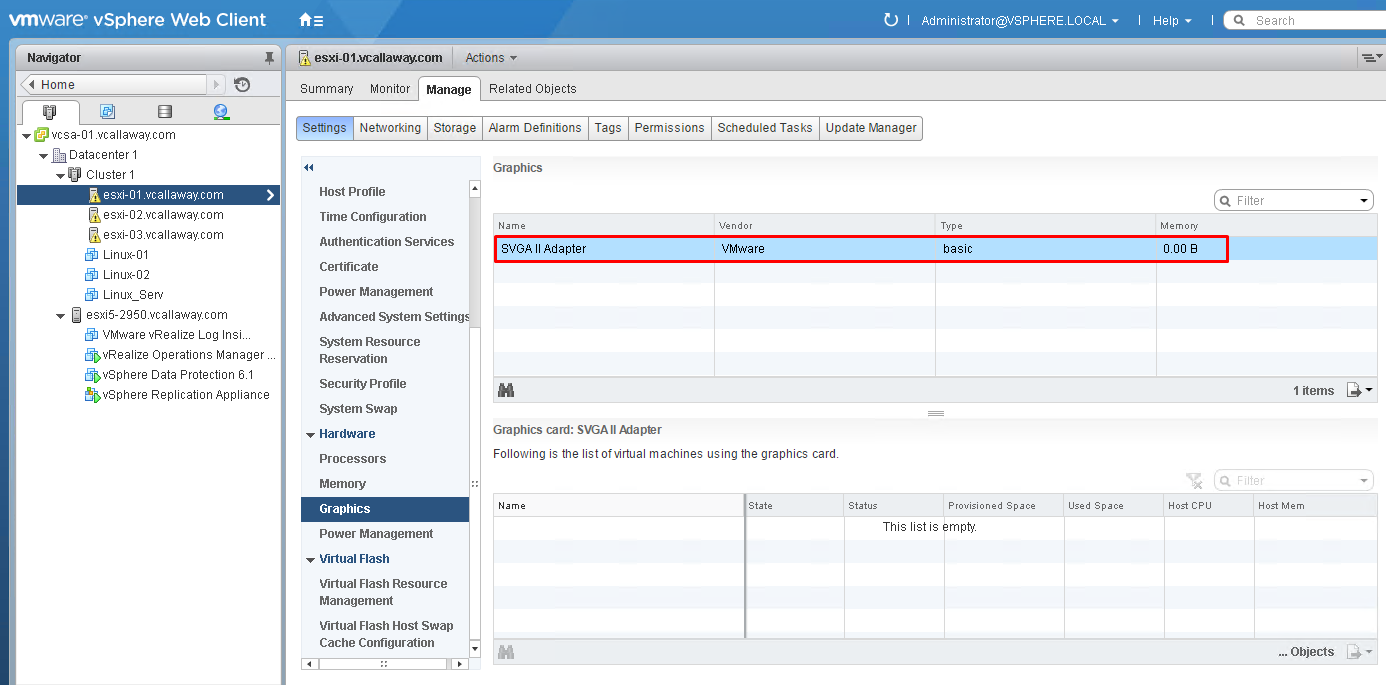

Each VM uses a proprietary VMware vSGA 3D driver that communicates with the vendor driver in the VMware vSphere® host. A vendor driver needs to be installed in the hypervisor. With vSGA, the physical GPUs in the host are virtualized and shared across multiple virtual machines (VMs). vSGA is generally used for knowledge workers and, occasionally, for power users. However, vSGA can create bottlenecks, depending on which applications are used, and the resources these applications require from the GPU.
#Vmware esxi 6.7 host graphics settings full#
It is an attractive solution for users who require the full potential of the GPU’s capability during brief periods. Virtual shared graphics acceleration (vSGA) allows a GPU to be shared across multiple virtual desktops.

Virtual Shared Pass-Through Graphics Acceleration.There are three types of graphics acceleration for Horizon: This guide is for administrators deploying hardware-accelerated graphics in VMware Horizon, or anyone interested in the technology. Horizon features and components, such as the Blast Extreme display protocol, instant-clone provisioning, VMware App Volumes™ application delivery, and VMware Dynamic Environment Manager™, are also integrated into Remote Desktop Services to provide a seamless user experience and an easy-to-manage, scalable solution. VMware Horizon provides a platform to deliver a virtual desktop solution as well as an enterprise-class application-publishing solution. In addition to handling the most demanding graphical workloads, hardware acceleration can also reduce CPU usage for less demanding basic desktop or published application usage, and for video encoding or decoding, which includes the default Blast Extreme remote display protocol. Users are no longer tied to a single physical location.The wait time to open complex models or run simulations is greatly reduced.With appropriate network bandwidth and suitable remote client devices, IT can now offer the most advanced users an immersive 3D-graphics experience while freeing them from the limitations of the old computing metaphor: This shift changes the computing metaphor for graphics processing, putting the additional compute, memory, networking, and security advantages of the data center at the disposal of the user, so that complex models and very large data sets can be accessed and manipulated from virtually anywhere. Moving the graphics acceleration hardware from the workstation to a server is a key architectural innovation. Note: This guide describes hardware-accelerated graphics in a VMware Horizon environment that uses a VMware vSphere® infrastructure. Later sections provide installation and configuration instructions, as well as best practices and troubleshooting. It begins with typical use cases and matches these use cases to the three types of graphics acceleration, explaining the differences. This guide describes hardware-accelerated graphics in VMware virtual desktops in VMware Horizon®. In addition, in areas such as oil and gas, space exploration, aerospace, engineering, science, and manufacturing, individuals with these advanced requirements must be located in the same physical location as the workstation. These standalone workstations carry high acquisition and maintenance costs. Engineers, designers, and scientists have traditionally relied on dedicated graphics workstations to perform the most demanding tasks, such as manipulating 3D models and visually analyzing large data sets.


 0 kommentar(er)
0 kommentar(er)
